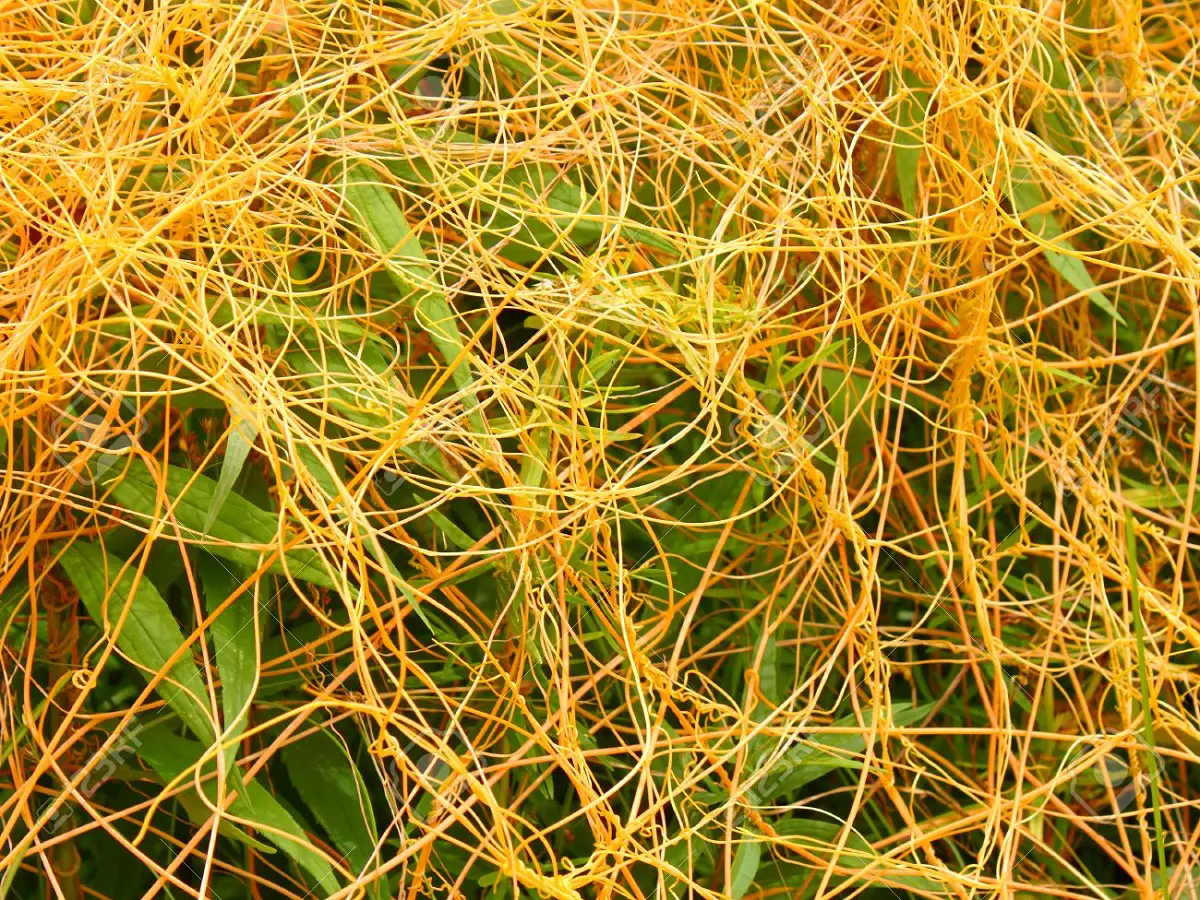

Today we are going to talk about a type of parasitic plant that usually appears annually and can affect crops. It is common in areas with a temperate climate and is usually more abundant in the spring season. It’s about the dodder. It is a plant that has various curiosities and a behavior when it comes to interacting with the crops to which it parasites somewhat peculiar.
In this article we are going to tell you everything you need to know about dodder and how you should eliminate it.
Key features


It is a plant that can be easily identified. This is because it creates a kind of tangle with thin stems that are orange, yellow and red. These stalks are curled on the plant that they parasitize. It has leaves of a very small size and has a low amount of chlorophyll. This means that they cannot effectively photosynthesize themselves. They have the highest concentration of chlorophyll when they are small. They simply use it to be able to germinate and produce the root of a smaller size and then it disappears.
Since it cannot photosynthesize on its own, it depends on another plant for nourishment and survival. Therefore, it is considered a parasitic plant. Normally, when another plant is housed, the dodder joins all the structures known as haustoria. These structures help it to be inserted into the vascular system of the plant that it parasites. These same structures also help them to get the nutrients they need to continue to develop and survive in the environment.
If we analyze it from the point of view of agriculture and gardening, we can see that the dodder is a type of plant that can generate serious problems. If the dodder begins to parasite our crops, we can see a drop in productive yield. Therefore, we must learn to prevent the spread of this plant and eliminate them as soon as possible.
Dodder life cycle


The dodder is not a particular plant, if not a genus comprising about 150 species. It belongs to the Convolvulaceae family and they have their own family occasionally known as Cuscutaceae. One of the most abundant species in cultivated fields is the Cuscuta campestris. It is one of the most widely spread and aggressive specimens against the plants it parasites. Its identification is somewhat more difficult since it depends on the characteristics of the inflorescence and its flower.
Once the plant has germinated, it produces a very short, swollen root and a rather thin stem. That is, it is only capable of developing when it is young to be able to parasite the other plant. The dodder seedling takes the shape of an arc and slowly straightens and rotates in an anti-clockwise motion. In order to carry out this rotation, they require sunlight. To do this, they need the little amount of chlorophyll that they generate when they are young. Once the host plant is acquired, it can develop normally and at a faster rate.
The dodder seedling usually emerge from depths of between 1-5 centimeters. The haustoria are the pointer-shaped structures that help to penetrate and connect with the vascular system of the host plant. Only one specimen of this species can spread up to a diameter of 3 meters annually.
It grows mainly in clusters of flowers that can become both white, pink and yellowish. They can produce capsules that contain gray-brown seeds with a fine texture. Only a part of the population of this seeds germinate last year. The problem with the seeds is that some have too hard the tegument and it becomes impervious to both oxygen and water. This causes that their germination does not take place.
Others, however, can gradually lose their latency over time and become permeable to oxygen and water. This is how it manages to germinate under environmental conditions that are more favorable to it.
How to eliminate dodder from our crops


Once the dodder has infested another plant, this problem can be renewed every year for a long time in our crops. This can become a problem in agricultural performance. The main problem with this parasitic plant is that its entire genus has a worldwide distribution. That is, it can measure both in the tropics with predominantly humid climates, and in semi-arid zones and temperate areas. It is in temperate climates where crops are most frequently attacked.
For example, India is one of the areas where the reflex dodder species frequently attack trees and ornamental shrubs. It also tends to attack some herbaceous plants. One of the most affected species are various vegetables and alfalfa. Not only does the yield reduce the quality of the crops, but it also interferes with the mechanics of crop development. All this increases the cost of crop production.
In order to eliminate dodder, there are various control methods. We are going to analyze what they are:
- Prevention: It is one of the cheapest methods that can help reduce the presence of Cuscuta in crops. Since it can be spread from one farm to another through tillage or crops from an infested field, it is interesting to apply manure from animals that have eaten hay or forage that is not contaminated with seeds.
- Spot treatment: the dodder usually appears on land and manifests as isolated patches. It can be treated with contact herbicides, cut or burned. It must be taken into account that once the plant has no direct relationship with the host plant, it cannot survive on its own.
- Full field treatment: if we have a generalized infestation of crops, more aggressive methods are required. Spot methods must be combined while using chemicals to be able to set a level on the control.
I hope that with this information you can learn more about the dodder.
